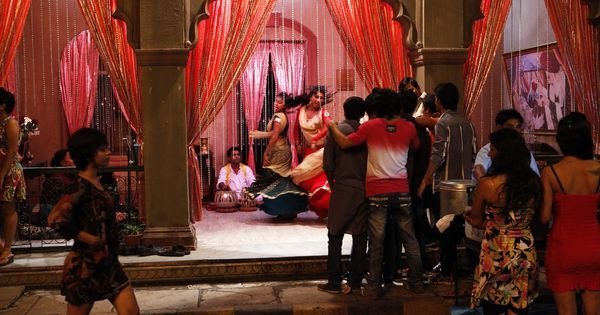Delhi GB Road stands today as the city’s largest and most notorious red light district. Yet, beyond its current reputation, GB Road holds a deep historical connection to the Mughal era, a period rich in cultural and architectural splendor. This area’s transformation over centuries from a zone of imperial significance to its present status is a tale intertwining historical grandeur with social realities.
The Mughal Connection: From Imperial Courts to GB Road
The roots of GB Road can be traced back to the time of the Mughals, an era that left an indelible mark on India’s cultural and architectural landscape. During the Mughal reign, particularly under emperors like Shah Jahan and Jahangir, there existed a practice of maintaining ‘harems’ – secluded quarters for women, many of whom were captives or concubines. These harems were a significant part of the royal palaces, illustrating the complex dynamics of power and gender during this period.
The Transformation of the Harem and the Rise of GB Road
As the Mughal Empire waned, the fate of those in the harems changed dramatically. With the decline of imperial power, many women from the harems found themselves displaced. This displacement marked the beginning of areas that would eventually evolve into red light districts, with GB Road being a prime example. The historical shift from royal harems to red light areas is a poignant reflection of the changing socio-political landscape of the era.
The Naming of GB Road: A Colonial Imprint
GB Road’s official name is a testament to its colonial past. Named after a British officer, Garstin Bastion, the road reflects the period of British rule in India. The renaming of the road in 1966 to Shraddhanand Marg by the Indian government was a symbolic move to reclaim its identity post-independence. However, the legacy of its former name, GB Road, continues to prevail in common usage.
The Societal Context of GB Road in Contemporary Times
Today, GB Road is synonymous with Delhi’s red light district, home to thousands of women engaged in prostitution. This area, with its narrow lanes and bustling activity, serves as a stark reminder of the city’s ongoing social and economic struggles. It is a space where history and contemporary societal issues intersect, raising questions about gender, exploitation, and the complexities of urban life in modern India.
GB Road as a Mirror to Delhi’s Historical Layers
GB Road is more than just a location in Delhi; it is a reflection of the city’s layered history. From its Mughal era origins to its present-day reality, the area encapsulates the transformative journey of Delhi through centuries. Understanding GB Road’s past is essential to comprehending not just the history of a single district, but the broader historical and cultural evolution of Delhi itself.
This journey through GB Road’s history reveals how areas known today for their controversial social roles were once integral parts of imperial history. The transformation of GB Road from a zone tied to the opulence of the Mughal courts to its present status underscores the dynamic and often tumultuous nature of Delhi’s historical narrative. As we walk through the bustling lanes of GB Road, we walk through chapters of history, each telling a story of change, resilience, and survival.
Disclaimer : इस न्यूज़ पोर्टल को बेहतर बनाने में सहायता करें और किसी खबर या अंश मे कोई गलती हो या सूचना / तथ्य में कोई कमी हो अथवा कोई कॉपीराइट आपत्ति हो तो वह [email protected] पर सूचित करें। साथ ही साथ पूरी जानकारी तथ्य के साथ दें। जिससे आलेख को सही किया जा सके या हटाया जा सके ।





